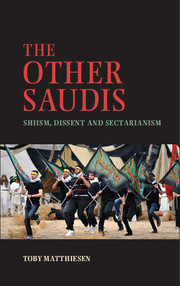Book contents
- Frontmatter
- Dedication
- Contents
- List of Maps and Pictures
- Acknowledgements
- A Note on Conventions
- Glossary
- Abbreviations
- Map
- Introduction
- 1 Politics of Notables
- 2 Oil and Dissent
- 3 Shia Islamism
- 4 A Decade of Confrontation
- 5 No More Revolution
- 6 Marginal Recognition
- 7 A New Intifada
- Conclusion The Politics of Sectarianism
- Bibliography
- Index
- References
5 - No More Revolution
Published online by Cambridge University Press: 05 December 2014
- Frontmatter
- Dedication
- Contents
- List of Maps and Pictures
- Acknowledgements
- A Note on Conventions
- Glossary
- Abbreviations
- Map
- Introduction
- 1 Politics of Notables
- 2 Oil and Dissent
- 3 Shia Islamism
- 4 A Decade of Confrontation
- 5 No More Revolution
- 6 Marginal Recognition
- 7 A New Intifada
- Conclusion The Politics of Sectarianism
- Bibliography
- Index
- References
Summary
When Iran accepted the ceasefire with Iraq on 18 July 1988, the Iraqi opposition activists in Iran saw their hopes disappointed. An era of war and confrontation was coming to an end, and together with the death of Khomeini on 3 June 1989 paved the way for improved Saudi-Iranian relations. Khomeini, who saw the Saudi ruling family as one of the arch enemies of Islam and in his last will denounced the Saudi king as a ‘traitor to God’, had been a major obstacle to such a rapprochement. His death led to small demonstrations in the Eastern Province, after which some Shia were arrested. Hizbullah al-Hijaz announced that it would now follow the marjiʿiyya of ʿAli Khamenei, but some of Khomeini’s admirers from the Eastern Province continued to follow him as a marjiʿ even after his death.
The MVM, which had hoped for a victory of Iran over Iraq, was riven by internal disagreements and splinter movements. Many of the remaining shirazi activists left Iran; some of the Iraqis went to Northern Iraq, while others went to Sayyida Zaynab, Western Europe, the United States, India, Malaysia and other places. The MVM had had links to India and dozens of young MVM members, including some Saudis who worked in the Bahraini branch (IFLB), went to India. These developments led the Saudi Shia in MVM to think more about their own political goals. Although the Saudis made up a large part of MVM members they had little say in decision making. While there were some Saudis in the MVM Central Committee, the two al-Mudarrisi brothers and the Iraqis were dominant. Since the late 1980s most khums and funding for MVM came from Saudi Arabia and the Saudis wanted to have more say over its distribution and invest more locally in Saudi Arabia. The Saudis, led by al-Saffar, pressed for the adoption of a clear programme that would limit the authority of al-Mudarrisi, including movement-internal elections, but to no avail. Saudi funding became so important that even IFLB opened a hussainiyya in Damascus specifically to receive Saudi alms givers and created a secret fundraising branch inside Saudi Arabia.
- Type
- Chapter
- Information
- The Other SaudisShiism, Dissent and Sectarianism, pp. 140 - 165Publisher: Cambridge University PressPrint publication year: 2014



